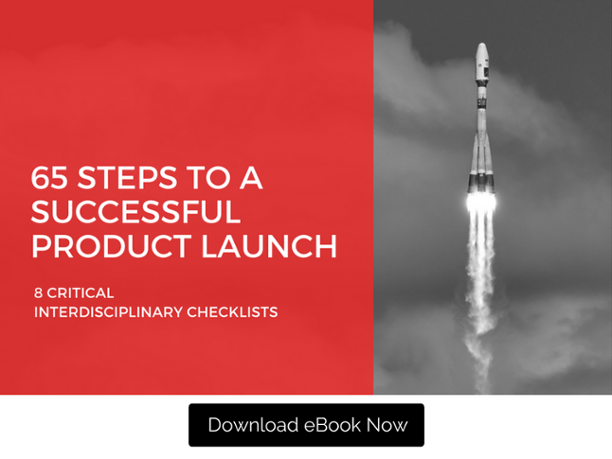 Storytelling plays a huge role in establishing disruptive technology as a market force. Good storytelling is important when introducing a complex and disruptive offering in the marketplace whose value is not well understood. But storytelling is only the beginning. It takes a village to launch and drive adoption.
Storytelling plays a huge role in establishing disruptive technology as a market force. Good storytelling is important when introducing a complex and disruptive offering in the marketplace whose value is not well understood. But storytelling is only the beginning. It takes a village to launch and drive adoption.
Each year, new technology emerges and continues to change the way we live, work and play. Sometimes, it only provides incremental benefits, but on occasion, something new emerges that is truly innovative and shifts the existing paradigm. Examples of paradigm-shifting technologies include blockchain, the Internet of Things (IoT) and artificial intelligence (AI).
Although the primary focus of any launch is the solution that solves a particular problem, the technology becomes the enabler -- the how and why of a problem that couldn’t be solved for before. Some would argue that buyers don’t need to understand the underlying technology; however, we strongly disagree. Customers are buying into a longer-term vision and need to understand the viability of the new technology.
Launching a solution with a technology that provides incremental benefits is significantly more straightforward than introducing a disruptive technology. For incremental technology, the context within the market already exists to help target audiences easily understand its value, whereas context needs to be created from scratch for anything that is paradigm-shifting.
From my experience, there is a steep learning curve, and it takes a variety of activities over time to educate the market and establish thought leadership in order to successfully market a new technology. So, exactly what do you need to campaign disruptive technology?
- Captivating Vision
Buyers need a roadmap to understand where the technology is today and where it will be in two years, in five years and in 10 years. The vision needs to be simple, relatable and futuristic.
For example, in the mid-1990s, when the internet was still in the early-adopter phase, we had a client who was working on the leading edge of voice recognition technology. He would begin every briefing and speaking opportunity similar to this:
“One day, you are going to be able to pick up the phone and just say, ‘I want a pizza at 6 p.m.’ At 6 p.m., your favorite pizza from your favorite restaurant will show up at the door, and it will already be paid for.”
At the time, this statement was like something from The Jetsons -- no one had articulated a vision like it. It captivated the audience before he proceeded to talk about his innovation, which was the first step on the road map to achieving that vision. Twenty years later, with Alexa and Siri, his long-term vision is beginning to become a reality.
- Perseverance
Timing is everything. Introducing something new to the market and driving adoption takes a long time. Technology needs to be stable enough, and the market needs to be ready to hear your message.
Given the previous example, it has taken more than 20 years for that vision to become a reality. This is not always the case; however, it is important to realize that campaigning a new technology can take years, not months.
- A Value Proposition That Makes Sense
Disruptive technologies typically solve complex business problems or create new business opportunities that can be hard to understand. You need a value proposition that is simple and clear, and focuses on outcomes and not on the complexities of how a particular solution works.
- The Right Market Category
Market categories provide context for what exists in a market segment. Analysts -- industry and financial -- who publish market reports play a pivotal role in how your solution and technology will be viewed in the market. They use market categories to group and report on solutions and technologies.
An incremental technology usually falls into an existing category, even if it is on the fringe or a subset of that category. For example, the cloud is a major category, whereas hybrid cloud and multi-cloud diversification are applications of the cloud and are categorized as subsets.
Developing a brand-new category for a disruptive technology takes time and money. You need to work closely with analysts to educate them and convince them that your disruptive technology is worth following and recommending.
- A Charismatic Spokesperson
There is nothing worse than listening to someone drone on and on about something that nobody understands. You need a spokesperson who is an avid storyteller and who can captivate an audience.
- Involvement In The Ecosystem
No technology stands on its own. It is critical that you demonstrate involvement in the industry. This can take the form of driving standards, joining an association, participating in industry events or collaborating with others in the ecosystem.
- Incremental Milestones To Drive Adoption
Prospective customers are not going to make big investments or swap out a solution that is currently working for an unproven technology. However, they are often willing to make incremental investments as test projects -- as long as the risk is mitigated.
To drive adoption, your road map needs to have incremental milestones as opposed to quantum leaps.
- A Content Strategy That Drives The Conversation
Don’t be afraid to create bold and somewhat controversial content. You will need primers, glossaries, e-books, case studies, solutions briefs, videos, social images and technology papers with strong and captivating visuals.
- Public Relations
Creating an industry narrative for disruptive technology is difficult and often takes senior talent to be effective. Consider hiring a creative PR team or working with a contractor who understands technology and has experience with emerging tech. Professional PR efforts can get your technology into the current media conversation.
- A Community Of Early Adopters
Stay in touch with early adopters so that you can learn more about what is working and what is not working. Bring them into your storytelling, and give them the platform so they can tell their stories as they relate to your solution.
You can do this by creating a customer council, co-speaking at industry events, developing joint-bylined articles or collaborating on content marketing.
In my experience, it takes a village to launch disruptive solutions and drive adoption. Don’t underestimate the effort or resources required.
This article was originally featured in Forbes.




